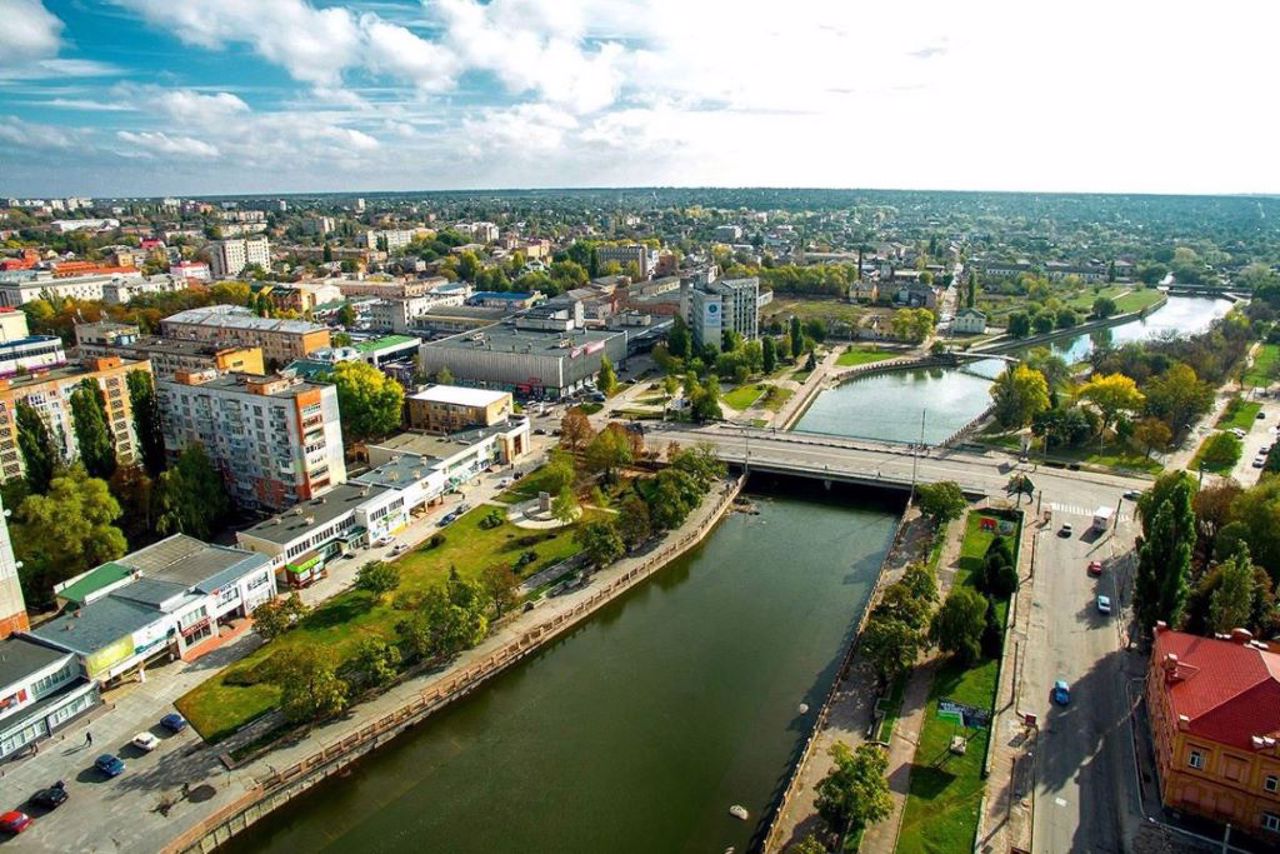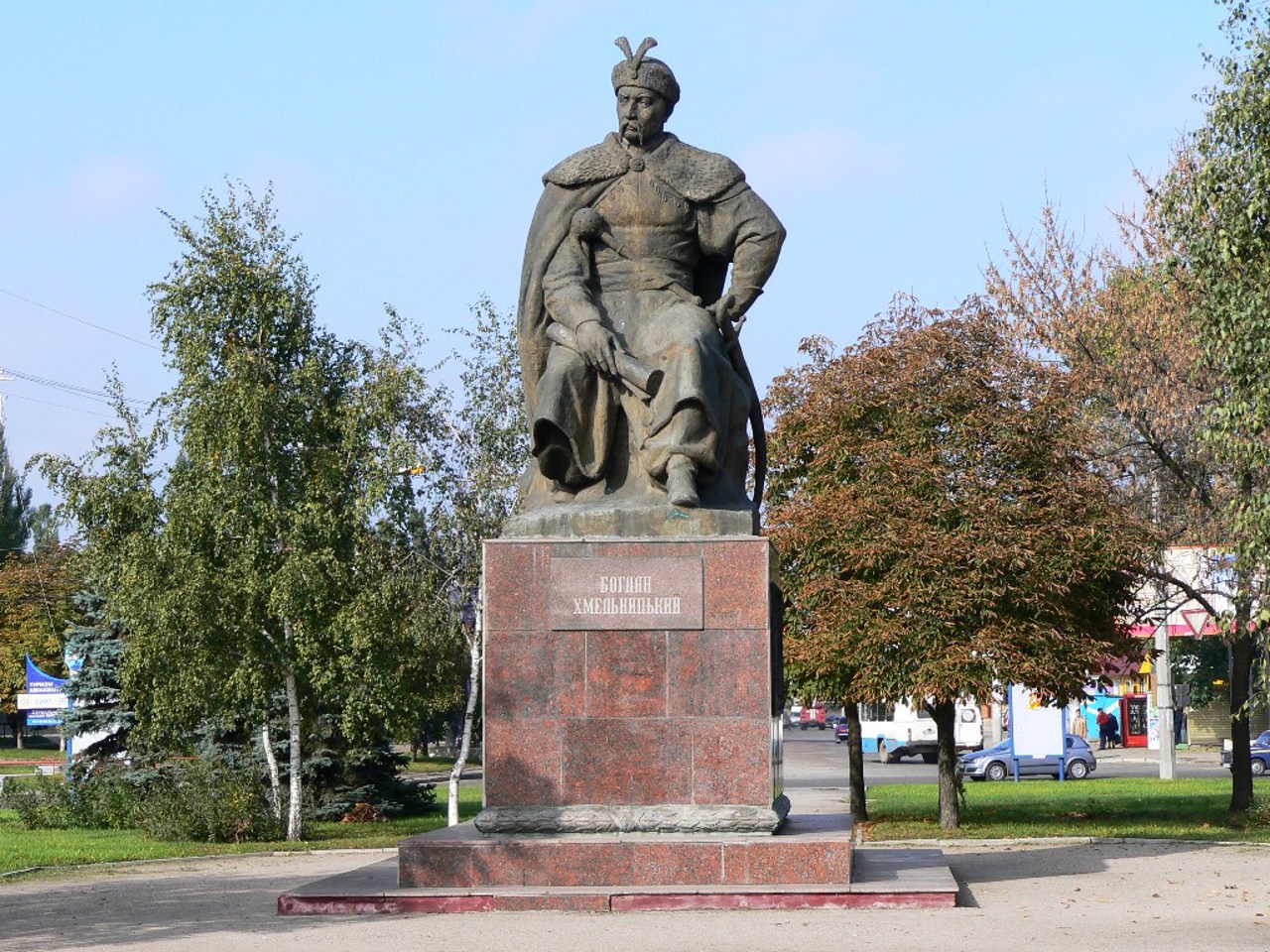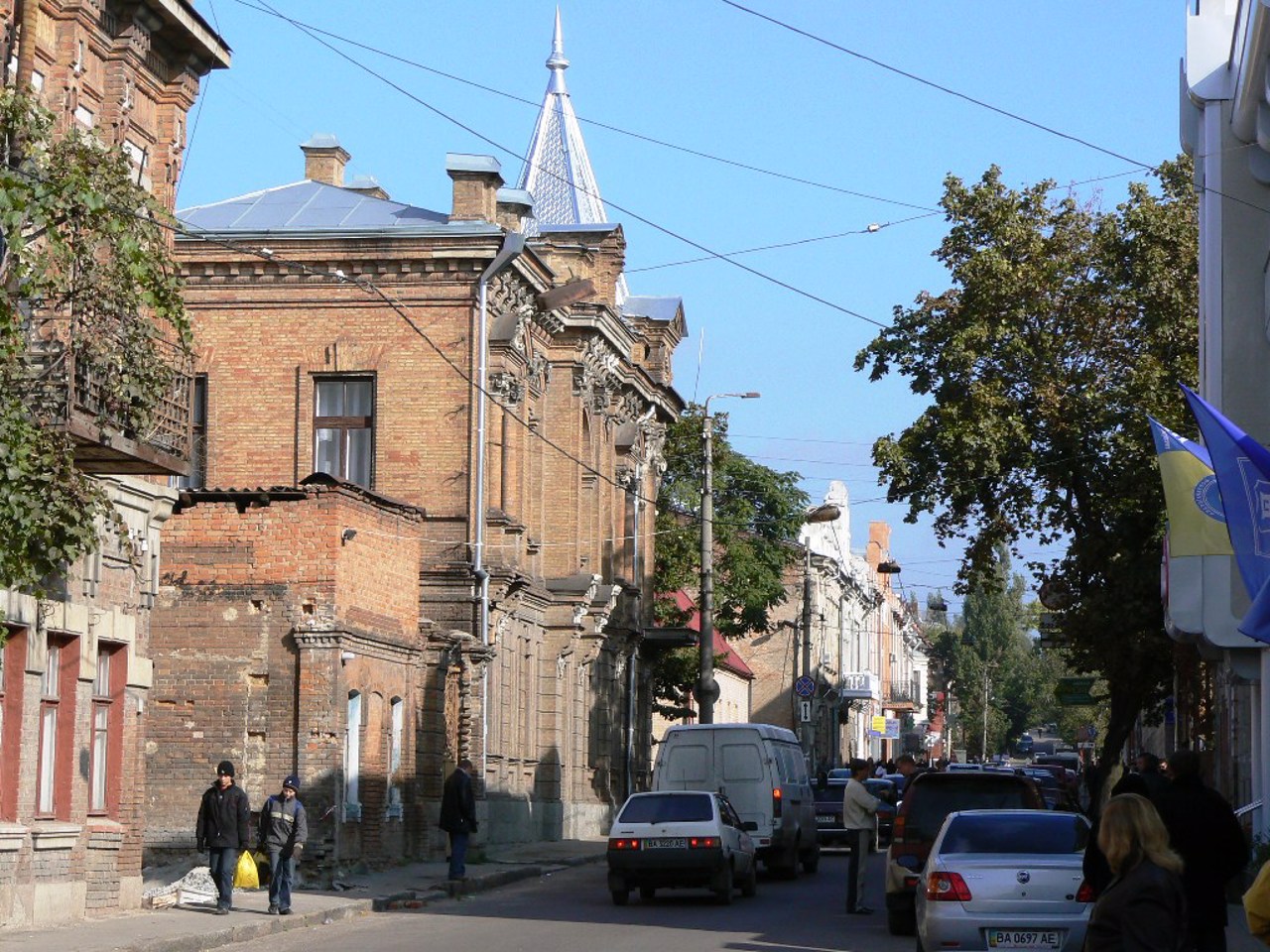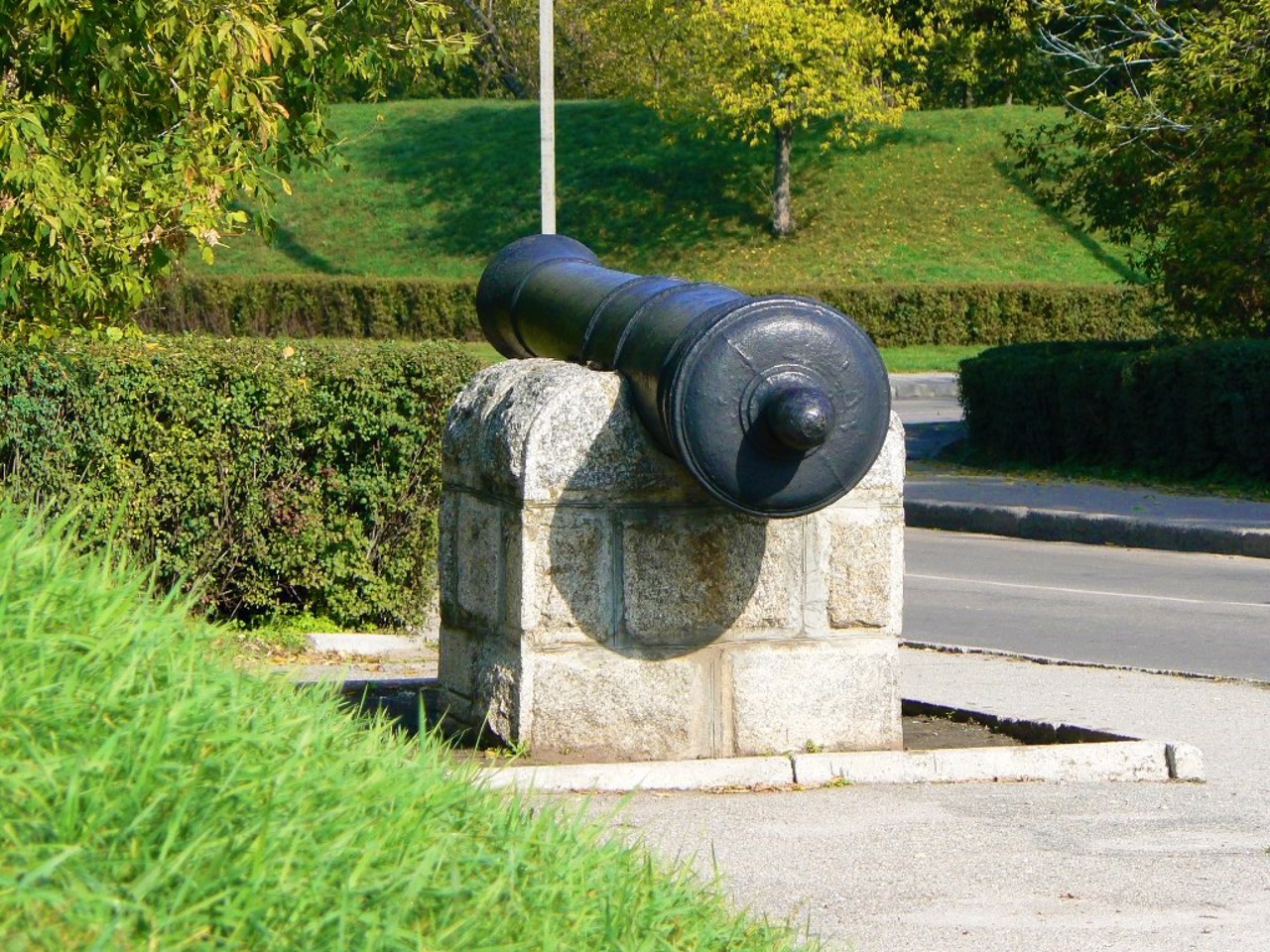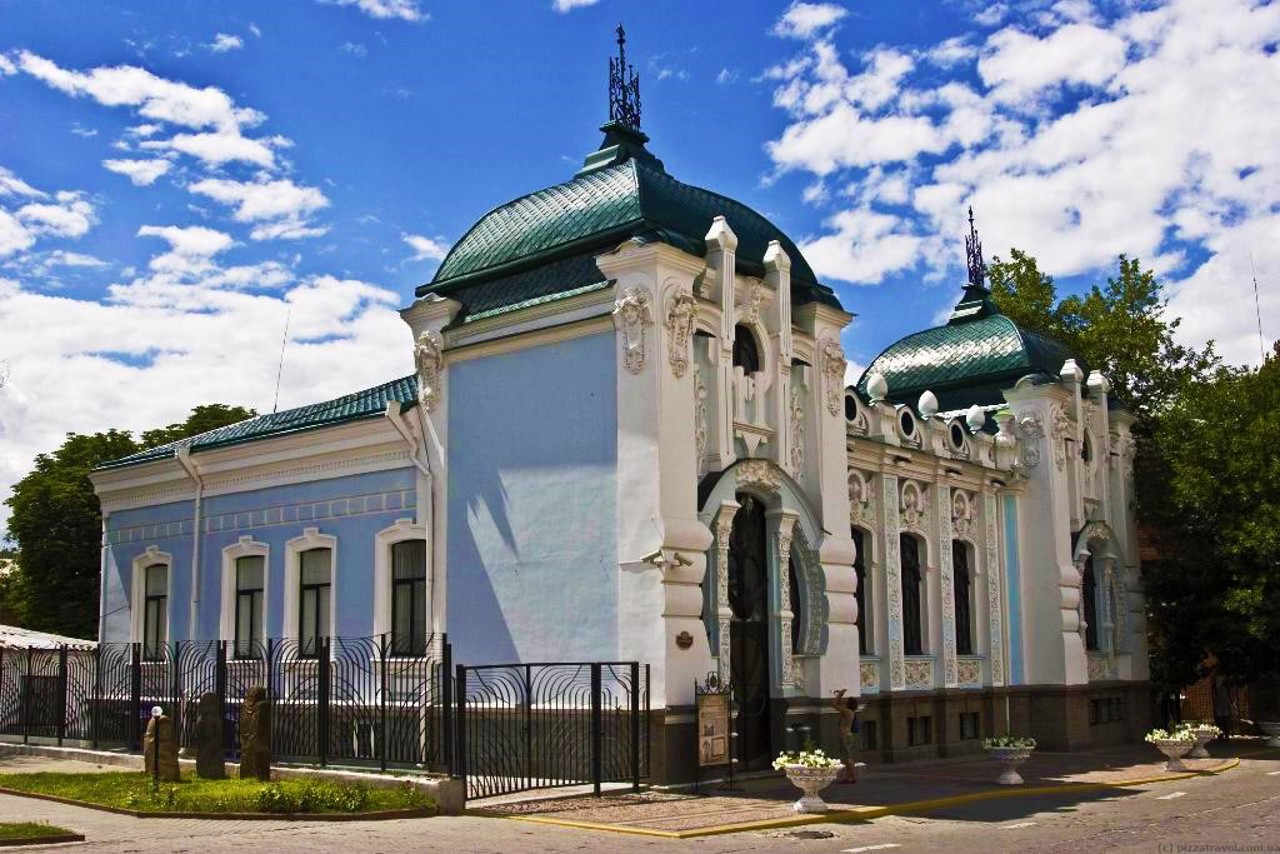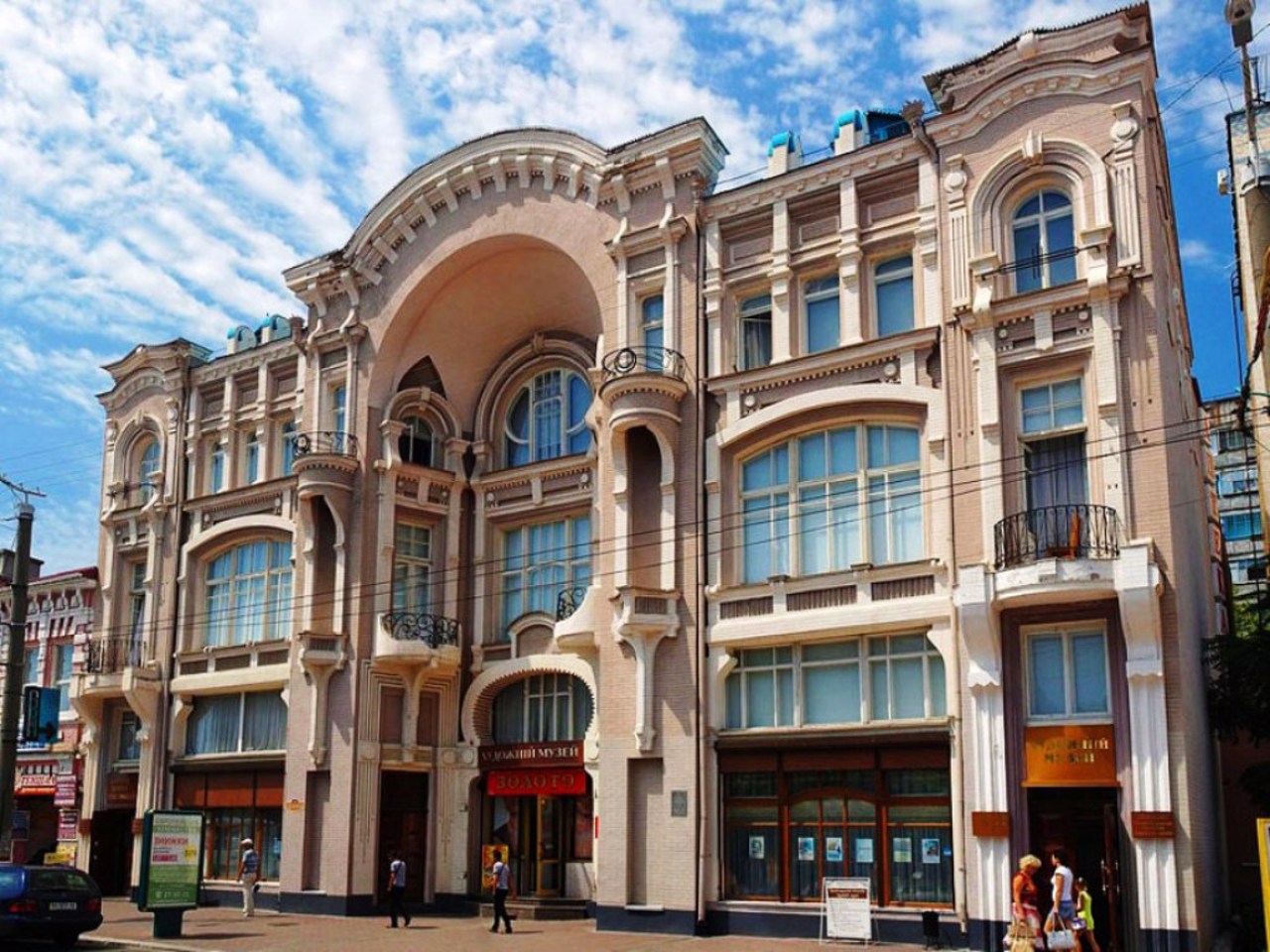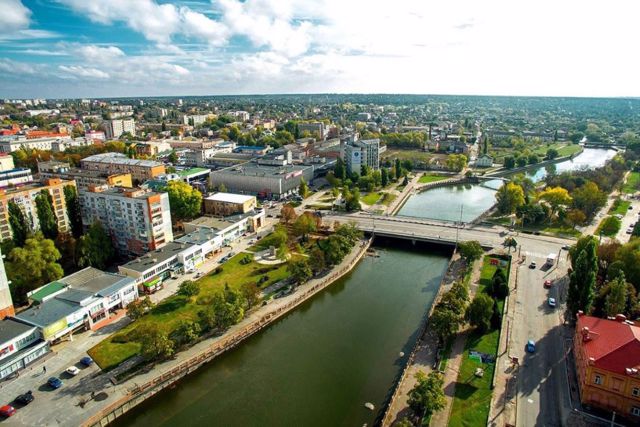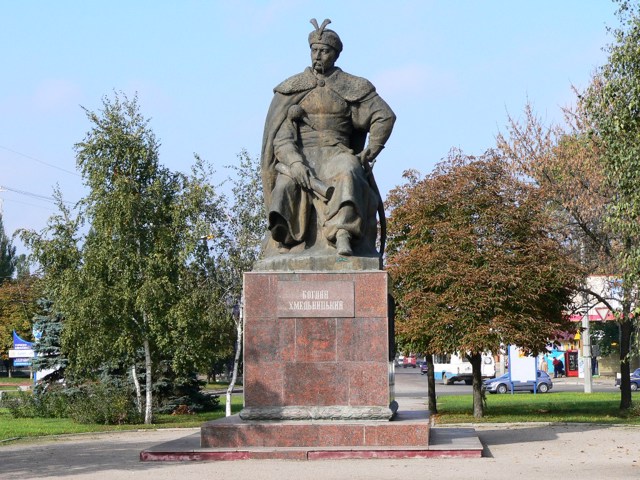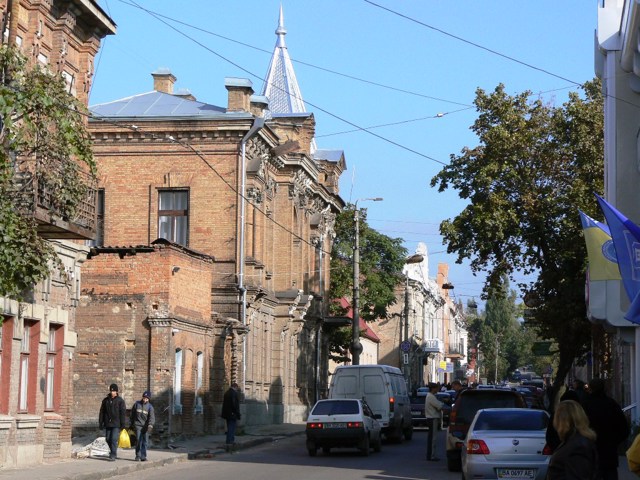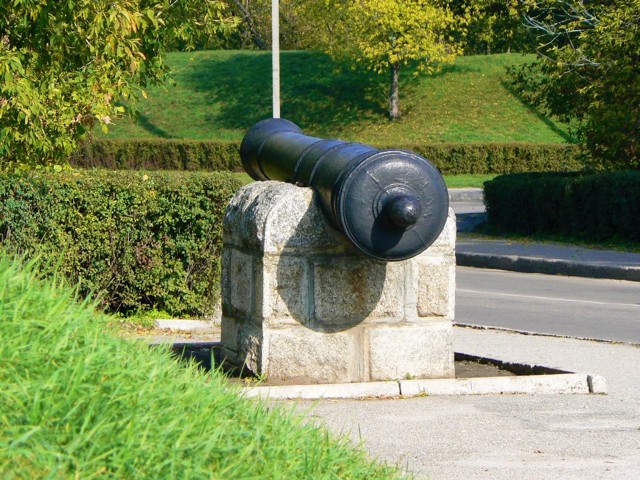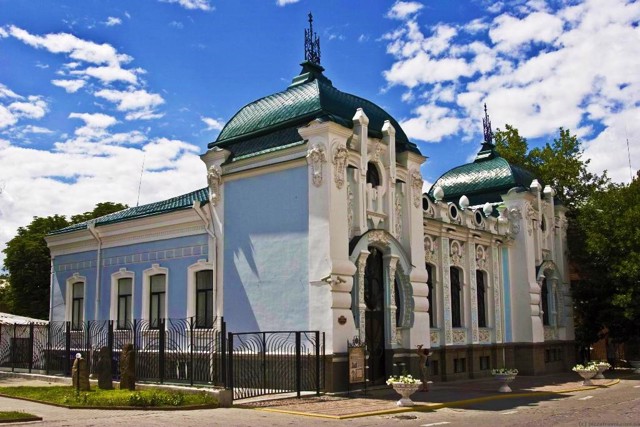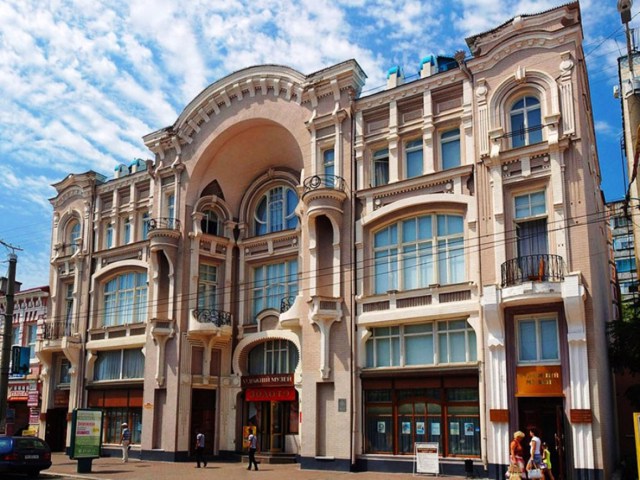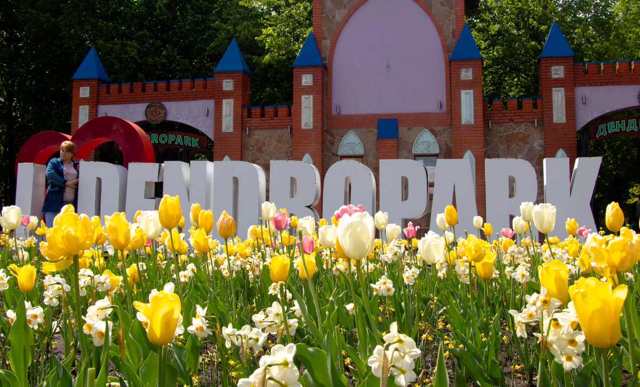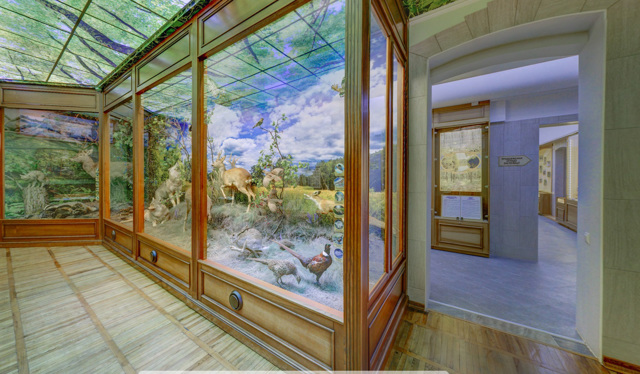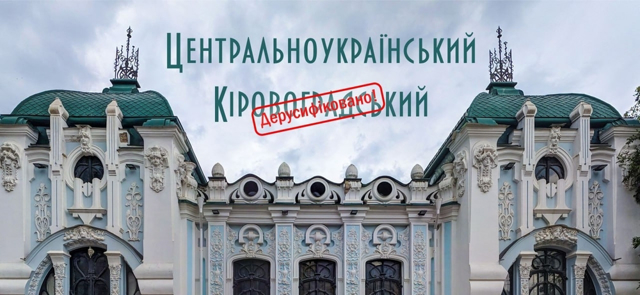Functional temporarily unavailable
Kropyvnytskyi
Travel guide online Kropyvnytskyi
General information about Kropyvnytskyi
Kropyvnytskyi is a relatively young city, a large industrial center. It is located in the upper reaches of the Inhul River, south of Cherkasy.
In the 16th-18th centuries, Cossack winter quarters existed in these places, in particular the Inhulskyi and Lelekivka hamlets (now urban areas).
The current city was founded in 1754 as the fortress of Saint Elizabeth by the decision of the Russian empress Yelyzaveta Petrivna for protection against the Turks and Crimean Tatars (ramparts have been preserved). Having lost its defensive significance, in 1784 Yelysavethrad received city rights.
From the beginning of the 19th century, it became the center of military settlements in the south of Ukraine. The middle of the 19th century is a period of active construction, the building o ...
Kropyvnytskyi is a relatively young city, a large industrial center. It is located in the upper reaches of the Inhul River, south of Cherkasy.
In the 16th-18th centuries, Cossack winter quarters existed in these places, in particular the Inhulskyi and Lelekivka hamlets (now urban areas).
The current city was founded in 1754 as the fortress of Saint Elizabeth by the decision of the Russian empress Yelyzaveta Petrivna for protection against the Turks and Crimean Tatars (ramparts have been preserved). Having lost its defensive significance, in 1784 Yelysavethrad received city rights.
From the beginning of the 19th century, it became the center of military settlements in the south of Ukraine. The middle of the 19th century is a period of active construction, the building of the historical center is partially preserved. The development was facilitated by Elvorti industrialists.
The poets Adam Mitskevych and Oleksandr Pushkin visited here.
In 1929, the city was renamed to Zinovyevsk, in 1934 - to Kirov, in 1939 - to Kirovohrad, in 2016 - to Kropyvnytskyi, because in the 19th century a theater group led by Marko Kropyvnytskyi and Ivan Tobilevych (Karpenko-Kariy ), which became the cradle of Ukrainian theater.
The historical center retains a charming provincial spirit.
Кропивницький - відносно молоде місто, великий промисловий центр. Розташоване у верхній течії річки Інгул на південь від Черкас.
У XVI-XVIII століттях в цих місцях існували козацькі зимівники, зокрема хутори Інгульський та Лелеківка (зараз міські райони).
Нинішнє місто засноване в 1754 році як фортеця Святої Єлисавети за рішенням російської імператриці Єлизавети Петрівни для захисту від турків і кримських татар (збереглися вали). Втративши оборонне значення, в 1784 році Єлисаветград отримав права міста.
З початку XIX століття стає центром військових поселень на півдні України. Середина XIX століття - період активного будівництва, забудова історичного центру частково збереглася. Розвитку посприяли промисловці Ельворті.
Тут бували поети Адам Міцкевич і Олексан ...
Кропивницький - відносно молоде місто, великий промисловий центр. Розташоване у верхній течії річки Інгул на південь від Черкас.
У XVI-XVIII століттях в цих місцях існували козацькі зимівники, зокрема хутори Інгульський та Лелеківка (зараз міські райони).
Нинішнє місто засноване в 1754 році як фортеця Святої Єлисавети за рішенням російської імператриці Єлизавети Петрівни для захисту від турків і кримських татар (збереглися вали). Втративши оборонне значення, в 1784 році Єлисаветград отримав права міста.
З початку XIX століття стає центром військових поселень на півдні України. Середина XIX століття - період активного будівництва, забудова історичного центру частково збереглася. Розвитку посприяли промисловці Ельворті.
Тут бували поети Адам Міцкевич і Олександр Пушкін.
В 1929 році місто перейменовано в Зінов'євськ, в 1934 році - в Кірове, в 1939 році - в Кіровоград, в 2016 році - в Кропивницький, оскільки в XIX столітті тут працював театральний гурток, очолюваний Марком Кропивницьким та Іваном Тобілевичем (Карпенком-Карим), що став колискою українського театру.
Історичний центр зберігає чарівний провінційний дух.
Сплануй своє перебування у Kropyvnytskyi
What to see and where to go in Kropyvnytskyi
Tourist attractions and museums of Kropyvnytskyi
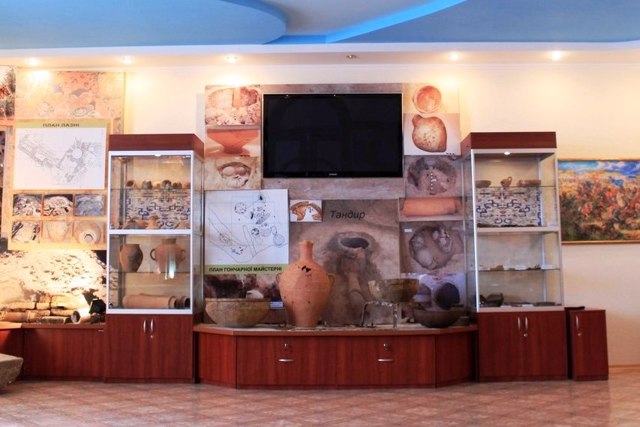
Archaeological Museum named after Ninel Bokiy
Museum / gallery
The Archaeological Museum named after Ninel Bokii at the Central Ukrainian State University named after Volodymyr Vynnychenko in Kropyvnytskyi was opened in 2011. It bears the name of its founder, historian and archaeologist, assistant professor of the Department of History of Ukraine, Ninel Bokiy.
The main exposition of the museum represents the work of the archeological expedition of Kirovograd archaeologists for 30 years and contains artifacts from almost all archaeological eras. In particular, items from such well-known monuments as the Melhunovskyi kurgan, Samur-Mohyla, Scythian burial mounds near the village of Zalom and the city of Svitlovodsk are presented. Among them: ceramics, weapons, jewelry, horse bridles and ritual objects.
The pearl of the collection is materials from the Golden Horde period, which represent a unique archaeological site near the village of Torhovytsia in the Kirovohrad Region.
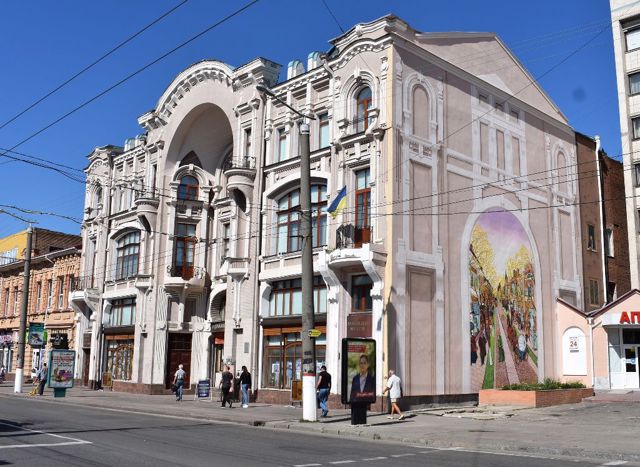
Art Museum
Architecture , Museum / gallery
The exposition of the Art Museum in Kropyvnytskyi is housed in a building in the Art Nouveau style, built at the end of the 19th century by the order of the merchant Israel Shpolyanskyi.
For the first time, the question of creating an art museum in the city was raised by the local intelligentsia back in 1870, but real work began only in 1921.
Today, the museum's holdings include 9,000 exhibits: painting, graphics, sculpture, ceramics and glass, fabric, wood, metal, archival and documentary, photos. The museum received part of the exhibits from the funds of the Hermitage, Tretyakivska Gallery, Kyiv museums, others represent the creative work of famous artists from Kropyvnytskyi.
The museum has five exhibition halls, three of which are stationary: "Sacred Art", "Art of the 18th - early 20th centuries", "Compatriot Artists".
The pearl of the collection is the painting "Bloody Sunday in St. Petersburg on January 9, 1905" by the original Polish artist Voytsekh Horatsiy Kossak.
A complex of decorative and applied art is also presented in the museum exposition.
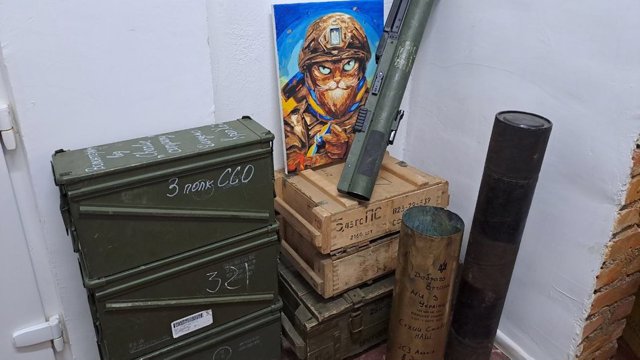
Battlefield Trophies Museum
Museum / gallery
"The Battlefield Trophies Museum" opened in 2022 in Kropyvnytskyi in the public space "Krop:hub".
The collection of military trophies began in 2014. Most were brought by the defenders in 2022. The trophies here are from Kharkiv, Kyiv, Mykolaiv, Kherson, Donetsk and Luhansk regions.
The exhibition presents more than a hundred trophies: dry rations, flasks, rocket parts, remnants of ammunition, drones and helicopters, money and clothing of Russian occupiers, etc. They are transferred to the museum in the public space from the front by Ukrainian military personnel. It is planned to make an open-air museum.
The public space and volunteer center "Krop:hub" is located on the first floor of the House of Life (entrance from Ostrivska Street).
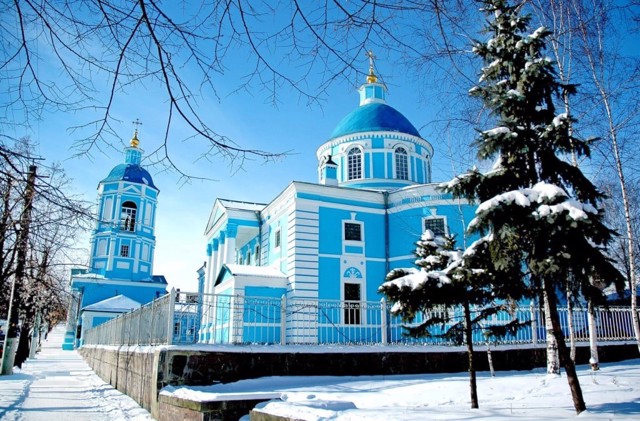
Cathedral of the Nativity of the Holy Virgin (Greek Church)
Temple , Architecture
The stone church of the Holy Virgin of Volodymyrska with a bell tower was built at the expense of the Greek community of Yelysavethrad (now Kropyvnytskyi).
Initially, there was a wooden temple built in 1766 by Greek merchants at this place. In 1898, the building was rebuilt, the rector's house is located next to it.
The interior has preserved ancient paintings, which were restored in 1905. Today it is the Cathedral of the Nativity of the Blessed Virgin Mary of the Moscow Patriarchate.
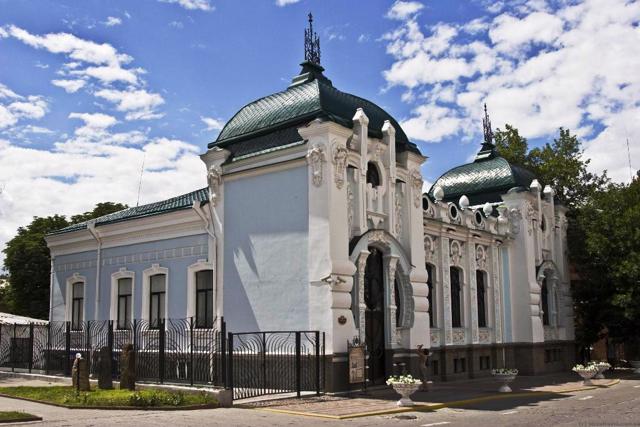
Central Ukrainian Regional Local Lore Museum (Barsky House)
Architecture , Museum / gallery
The Central Ukrainian Regional Museum of Local Lore in Kropyvnytskyi is a descendant of the first museum institution in the region, which was created in 1883 at the initiative of historian and teacher Volodymyr Yastrebov. Previously, the institution was called the Kirovohrad Regional Museum of Local Lore.
Since 1929, the museum has been housed in the former house of the merchant Oleksandr Barsky, which is a vivid example of the "early modern" architectural style. It was built between 1895 and 1910 by the city's leading architect Oleksandr Lyshnevsky. According to legend, the owner never had to live in it, as he died after completing all the works just on the doorstep of his new house.
The museum collections include about 68,500 thousand items of the main fund, which characterize the historical development and culture of the region from ancient times to the present day, as well as the nature of the region. The basis of the collection is the collection of private collector Oleksandr Ilyin: archaeological finds, paintings, icons. The museum lapidarium presents a Neolithic anthropomorphic stele, a log culture sarcophagus and 6 Scythian statues.
The branches and departments of the Central Ukrainian Regional Museum of Local Lore include:
- Reserve-museum of Ivan Tobilevych (Karpenko-Kary) "Khutir Nadiya";
- Marko Kropyvnytsky Memorial Museum;
- Ukrainian Choreographic Art History Museum;
- Museum and nature reserve "Tobilevychi";
- Historical and architectural reserve "Ascension of Cross Church" (Rayevsky Family Reserve);
- Historical and memorial reserve "Black Raven".
Kropyvnytskyi in news and blogs
Reviews Kropyvnytskyi
Geographical information about Kropyvnytskyi
| {{itemKey}} | {{itemValue}} |
|---|---|
| Region |
Kirovohrad |
